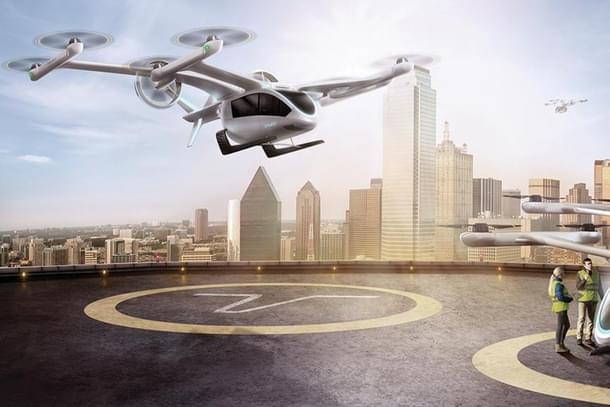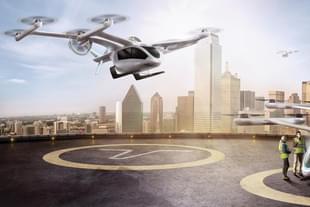Infrastructure
The Road Ahead For Urban Air Mobility Systems In India
Ankit Saxena
Aug 23, 2023, 09:37 AM | Updated 09:37 AM IST
Save & read from anywhere!
Bookmark stories for easy access on any device or the Swarajya app.


In the midst of an impending aviation revolution, India is setting its sights on embracing electric vertical take-off and landing (eVTOL) technology for urban air mobility (UAM), as a solution to its urban and regional transportation challenges.
In the upcoming years, the UAM infrastructure market in India is predicted to undergo significant growth, with an estimated value of $6.2 million by 2033.
A report conducted by BIS Research emphasises that the Indian UAM infrastructure market — focusing specifically on operations involving passenger and cargo gate-to-gate transportation — is projected to exhibit a compound annual growth rate (CAGR) of 22.38 per cent from the year 2023 to 2033.
UAM is a concept that aims to integrate aerial transportation services into urban transportation systems, providing efficient and fast mobility solutions.
Through the integration of technologies such as eVTOL aircraft, UAM holds the capacity to ease congestion, minimise travel durations, and elevate transport interconnectivity within urban areas.
Addressing such challenges, global companies and innovators are actively creating new transportation systems, with UAM emerging as a prominent remedy among these solutions.
According to the report, passenger gate-to-gate operations are expected to grow at a CAGR of 26.83 per cent ($3.1 million), cargo gate-to-gate operations at a CAGR of 18.55 per cent ($2.5 million), and hybrid passenger and cargo gate-to-gate operations at a growth rate of 29.81 per cent ($0.6 million) by 2033.
In addition to passenger and cargo operations, the charging and refueling stations, MRO facilities, and docking stations and hub spots, are expected to grow at a CAGR of approximately 9.37 per cent during the forecast period.
Globally, the urban air mobility market is expected to grow at a rate of 30 per cent annually from 2021 to 2040, reaching a value of $1.5 trillion by 2040 — considering technological advances and accelerated investment in the industry, according to Morgan Stanley.
Although the UAM market in India is still in its early stages of development, there is tremendous potential for growth in the country.
Faisal Ahmad, the co-founder and CEO of BIS Research, believes that India's startup ecosystem, combined with the challenges of urban congestion and transportation infrastructure, has created new possibilities for UAM services in the country.
Investors have been showing interest in UAM startups in India, as they see an opportunity to capitalise on this market once it takes off.
Tata and Uber have both shown interest in the Indian UAM infrastructure market and are planning to launch air taxi operations by 2025.
The Indian government is actively working on policies and regulations to support the development of this mobility system.





